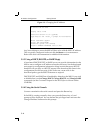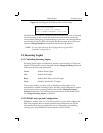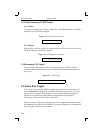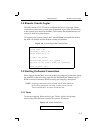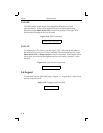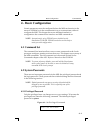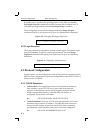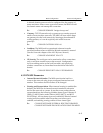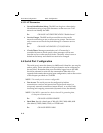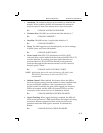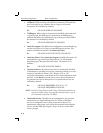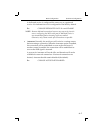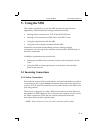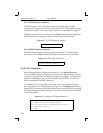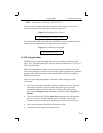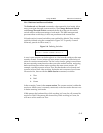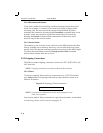
Basic Configuration Serial Port Configuration
4 - 5
¥ Autobaud: The autobaud feature can be enabled or disabled (the
default). When enabled, the MSS will automatically attempt to
match its speed to that of the remote device upon connection.
Ex: CHANGE AUTOBAUD ENABLED
¥ Character Size: The MSS can use 8 data bits (the default) or 7.
Ex: CHANGE CHARSIZE 7
¥ Stop Bits: The MSS can use 1 stop bit (the default) or 2.
Ex: CHANGE STOPBITS 2
¥ Parity: The MSS supports even and odd parity, as well as settings
of Mark, Space, and None (the default).
Ex: CHANGE PARITY EVEN
¥ Flow Control: Both RTS/CTS (hardware) and XON/XOFF
(software) ßow control methods can be used on the MSS. RTS/CTS
controls data ßow by sending serial port signals between two
connected devices. XON/XOFF, the default, sends particular
characters through the data stream instead. If no ßow control is
desired, specify ÒNone.Ó
Ex: CHANGE FLOW CONTROL CTSRTS
NOTE: Applications that use the control characters will conflict with
XON/XOFF flow control, in which case RTS/CTS is
recommended.
¥ Modem Control: When enabled, this feature allows the MSS to
check for signals coming from the modem (or other attached serial
device) to establish whether a valid connection exists. When
modem control is enabled, the port will be logged out whenever
DSR is de-asserted, and the MSS will de-assert DTR to end the
connection to the remote device. It is disabled by default.
Ex: CHANGE MODEM CONTROL ENABLED
¥ Signal Checking: When signal checking is enabled, the MSS will
check for the presence of a DSR signal before allowing an incoming
connection. Remote connections to the serial port will not be
permitted unless the DSR signal is asserted. It is disabled by
default.
Ex: CHANGE SIGNAL CHECK ENABLED



